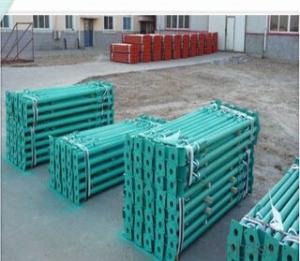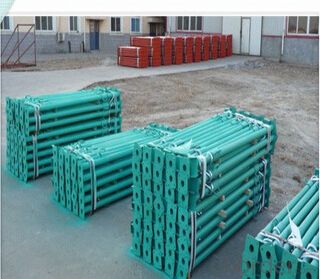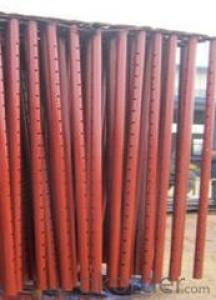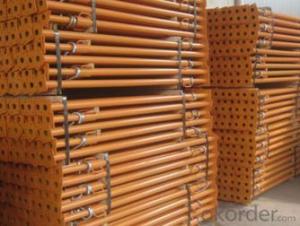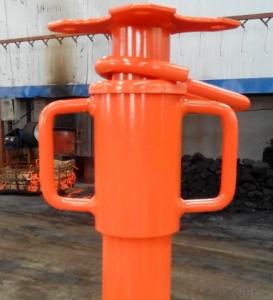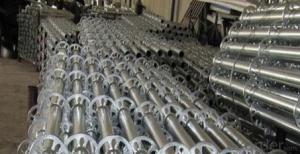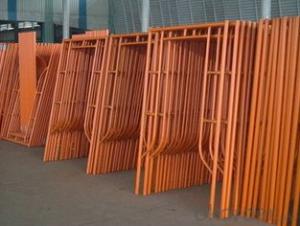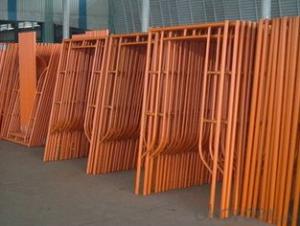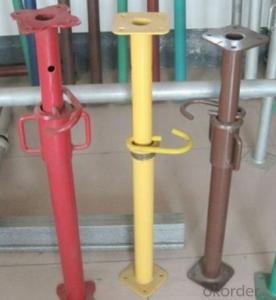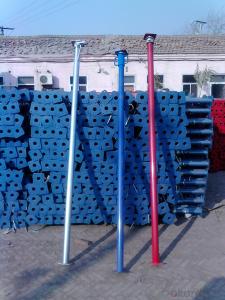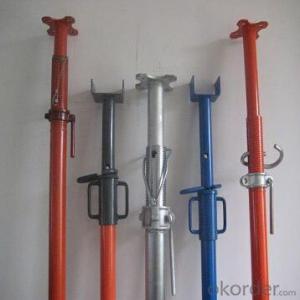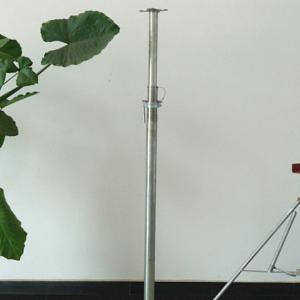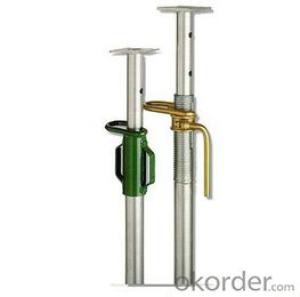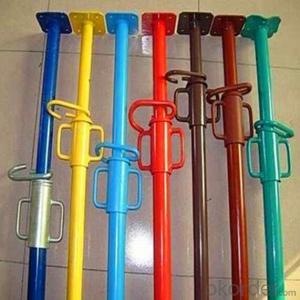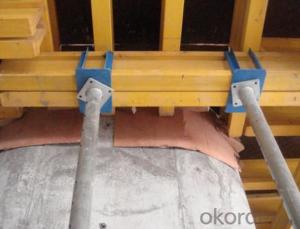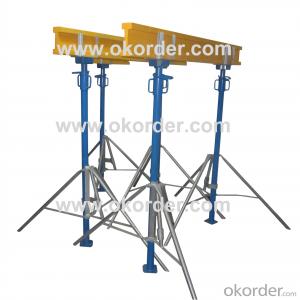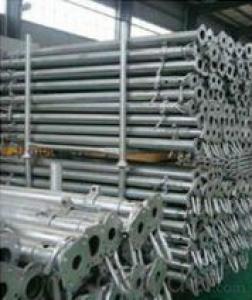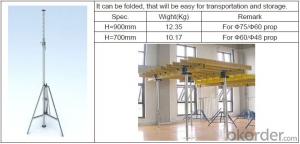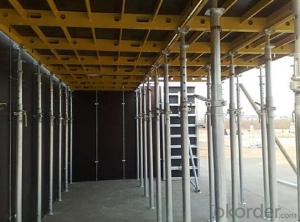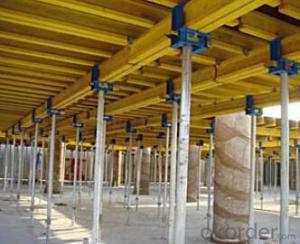scaffolding adjustable steel props for construction
- Loading Port:
- China Main Port
- Payment Terms:
- TT OR LC
- Min Order Qty:
- -
- Supply Capability:
- -
OKorder Service Pledge
OKorder Financial Service
You Might Also Like
Quick Details
| Place of Origin: | Model Number: | ||||
| Lapping Form: | material: | supplier: | |||
| service: |
Packaging & Delivery
| Packaging Detail: | in bulk ,in bundle or as your request |
| Delivery Detail: | within 15-20 days after the confirmation |
Specifications
adjustable steel prop
1. Free size,high efficiency
2. Easy to operate
3. Rigorous quality control
4. OEM
Adjustable steel props for construction
Adjustable steel props information
1).Material: international standard material Q235 or Q345 high strength bear capacity .
2).Surface treatment: painting, powder coating, galvanized, hot dip galvanized .
3).Type: light duty / medium duty / heavy duty .
4).Competitive price,High quality .
5).Advanced technology,Fast Delivery .
6). OEM service provided ,Factory direct sale .
7).Inspection: by ourselves or by SGS,or B.V,or others.
8). Common sizes
- Q: Are steel props compatible with different types of temporary signage or advertising displays?
- Steel props can be used with various types of temporary signage or advertising displays. They are commonly employed to offer support and stability to signage and displays, regardless of their material or design. These props are adaptable and can be modified to fit different sizes and heights of signage, making them suitable for a diverse range of temporary advertising requirements. Moreover, steel props possess strength and durability, guaranteeing that the signage or display remains firmly in position, even when exposed to outdoor elements or high levels of foot traffic.
- Q: What is the steel plate support
- Steel pipe support structure figure 1 as shown. The utility model is characterized in that the movable end head is similar to a drawer structure, and is composed of two parts of a movable end and a movable end. By the end of the channel plate, a telescopic rod, etc. the stiffening rib plate assembly welding end part into activities. The channel steel telescopic rod is arranged at the movable end to accommodate the steel pipe, and the telescopic function can be realized under the action of the hydraulic jack.
- Q: Can steel props be used for supporting temporary industrial structures?
- Yes, steel props can be used for supporting temporary industrial structures. Steel props, also known as adjustable steel props or acrow props, are commonly used in construction and industrial applications for temporary support. They are designed to provide temporary structural support during construction or renovation work, such as supporting beams, columns, walls, or floors. Steel props are made of high-quality steel, which ensures their strength and durability. They consist of an outer tube, an inner tube, a pin, and a collar. The outer and inner tubes can be adjusted to the required height, allowing for flexibility in supporting various structures. The pin and collar mechanism allows for easy adjustment and securing of the prop at the desired height. These props are known for their load-bearing capacity, stability, and reliability. They can withstand heavy loads and provide a secure temporary support system for industrial structures. Their adjustable nature allows for easy installation and removal, making them an ideal choice for temporary structures that require frequent changes or modifications. Moreover, steel props are versatile and can be used in different industrial settings. They are commonly used in construction sites, warehouses, factories, and other temporary structures. Whether it's supporting beams, roofs, or walls, steel props provide a reliable and efficient solution for temporary industrial structures. However, it is important to note that the specific requirements and load capacities of the temporary industrial structures should be considered when selecting steel props. Proper planning, design, and installation are crucial to ensure the safety and stability of the structures. It is recommended to consult with structural engineers or other professionals to determine the appropriate size, quantity, and positioning of steel props for supporting temporary industrial structures.
- Q: Do steel props require any special certifications or inspections?
- Yes, steel props typically require special certifications and inspections in order to ensure their safety and compliance with industry standards. These certifications and inspections are necessary because steel props are commonly used in construction projects to provide temporary support to structures during construction or renovation. The specific certification requirements may vary depending on the country or region, but in general, steel props are required to meet certain standards such as ISO 9001 (quality management), ISO 3834 (welding quality requirements), and EN 12811-1 (temporary works equipment). Certifications for steel props are typically obtained from accredited certification bodies that specialize in assessing the compliance of construction equipment with relevant standards. These bodies conduct thorough inspections and tests to ensure that the props are structurally sound, have proper load-bearing capacities, and are built to withstand the anticipated working conditions. Inspections of steel props are important to verify their condition and ensure that they are being used correctly and safely on construction sites. Regular inspections help identify any potential defects or signs of wear and tear that could compromise the props' integrity and safety. Inspections are usually carried out by qualified personnel, such as structural engineers or certified inspectors, who are trained to identify any issues and recommend necessary actions, such as repairs or replacements. In summary, steel props typically require special certifications and inspections to ensure their compliance with industry standards and guarantee their safety on construction sites. These measures are in place to protect workers and ensure the stability of structures during construction or renovation projects.
- Q: Can steel props be used for supporting temporary staircases?
- Steel props, also referred to as adjustable steel props or acrow props, have the capability of being utilized to support temporary staircases. In construction and building endeavors, these vertical supports are commonly employed to provide a temporary backbone to structures. With the ability to adjust their height and be effortlessly installed and removed, steel props are an ideal option for supporting temporary structures like staircases. By strategically placing the steel props underneath the staircase, stability is ensured, and the staircase remains secure and safe for usage. These steel props are engineered to withstand substantial loads and can be adjusted to the desired height, making them a dependable choice for supporting temporary staircases.
- Q: What are the common methods of testing steel props for structural integrity?
- The common methods of testing steel props for structural integrity include visual inspection, ultrasonic testing, magnetic particle inspection, and load testing. Visual inspection involves examining the props for any visible defects such as corrosion, cracks, or deformation. Ultrasonic testing uses high-frequency sound waves to detect internal flaws or discontinuities in the material. Magnetic particle inspection uses magnetic fields and iron particles to identify surface defects or cracks. Load testing involves applying a predetermined load to the prop to assess its capacity and behavior under stress. These methods help ensure the reliability and safety of steel props in structural applications.
- Q: Can steel props be used for supporting temporary awnings or canopies?
- Temporary awnings or canopies can be supported using steel props. These props, also known as adjustable steel props or steel shore props, are commonly utilized in construction to provide temporary support to structures. They can be easily installed and removed as needed, and their height can be adjusted. Steel props offer numerous benefits when it comes to supporting temporary awnings or canopies. Firstly, they are strong and sturdy, capable of bearing heavy loads. This ensures stability and safety by supporting the weight of the awning or canopy. Moreover, steel props can be adjusted to the desired height, allowing for flexibility in installation. This is particularly advantageous when dealing with uneven ground or structures of varying heights. With their adjustable feature, steel props can be modified effortlessly to provide the necessary support and ensure a level and secure installation. Furthermore, steel props are durable and weather-resistant, making them suitable for outdoor use. They can withstand various weather conditions, including wind, rain, and even snow, protecting the awning or canopy from damage and keeping it securely in place. In conclusion, steel props are a reliable and versatile solution for supporting temporary awnings or canopies. Their strength, adjustability, and durability make them an ideal choice for providing stable and secure support to these structures.
- Q: Can steel props be used in temporary support of conveyor systems?
- Yes, steel props can be used in temporary support of conveyor systems. Steel props are strong and durable, making them suitable for providing temporary support and stability to conveyor systems during construction or maintenance activities.
- Q: Can steel props be used in supporting precast concrete elements during installation?
- Yes, steel props can be used to support precast concrete elements during installation. Steel props, also known as adjustable steel props or adjustable steel shores, are commonly used in construction to provide temporary support to structures or elements. They are particularly useful in supporting precast concrete elements due to their strength, adjustability, and stability. During the installation of precast concrete elements, steel props are typically positioned underneath the elements to provide vertical support and prevent them from sagging or collapsing. The props can be easily adjusted in height to accommodate varying elevations or to ensure a level installation. This adjustability is especially beneficial when dealing with uneven ground conditions or when aligning multiple precast elements. Steel props are designed to withstand heavy loads and provide a reliable support system for the precast concrete elements. They are usually made of high-quality steel with a robust construction, allowing them to bear the weight of the elements without deformation or failure. In addition to their strength and adjustability, steel props offer stability during the installation process. They are equipped with base plates or feet that provide a solid foundation, ensuring that the props remain securely in place. This stability is crucial to prevent any unexpected movement or shifting of the precast elements, which could lead to damage or safety hazards. Overall, steel props are a suitable choice for supporting precast concrete elements during installation. Their strength, adjustability, and stability make them a reliable and efficient solution for ensuring a successful and safe installation process.
- Q: Can steel props be used for supporting temporary seating arrangements or bleachers?
- Yes, steel props can be used for supporting temporary seating arrangements or bleachers. Steel props are commonly used in construction and temporary structures due to their strength and stability.
Send your message to us
scaffolding adjustable steel props for construction
- Loading Port:
- China Main Port
- Payment Terms:
- TT OR LC
- Min Order Qty:
- -
- Supply Capability:
- -
OKorder Service Pledge
OKorder Financial Service
Similar products
Hot products
Hot Searches
Related keywords
